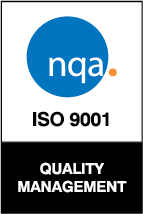System performance (seal integrity, pumpdown time) is adversely affected by inadequate maintenance and operating procedures. Preventative maintenance should include:
- Handling all interior surfaces (including items being tested, placed, or used inside) with powder/oil-free gloved hands
- Cleaning the chamber, and items being tested, placed, or used inside (see below)
- Preconditioning (see below)
- Changing the seal/s (replacement door seals are available from Abbess)
- Changing filters (see manual for suppliers)
- Performing manufacturer recommended maintenance on the pump/s (e.g. changing the oil on oil-pumps, or scroll tips on scroll pumps)
- Inert gas purging and keeping the chamber at vacuum between test phases, and during storage.
Maintenance schedules will be application/process specific and are the responsibility of the Owner/Operator. Regular comparison of the pumpdown time with that as-delivered would help the user track deterioration, and so determine a suitable maintenance schedule.
Note that an unclean vacuum system can lead to cross-contamination: deposits on the chamber walls can migrate to the unit under test, and to the sensors (deteriorating, or even damaging the sensors).
Note that system performance is also affected by changes in humidity (seasonal or otherwise), and altitude.
Chamber Preconditioning
Abbess offers chamber bakeout and inert gas purge ports to facilitate chamber preconditioning and contamination control in general (Contamination Control Kit). These features are a requirement for high vacuum applications and, when present, regular preconditioning sessions should be employed as part of the maintenance schedule.
Bakeout should be carried out in an empty chamber in order not to cross-contaminate the unit under test. Purging while baking out will facilitate the process.
To keep the chamber (and unit under test) in as ‘clean & dry’ condition as possible, the chamber should be consistently vented to dry inert gas purge rather than to atmosphere. Venting to laboratory air will adversely affect subsequent pumpdown times.
Preconditioning In-Chamber Items
All items (e.g. tools, cables, fixtures, and, of course, the unit under test) should be cleaned and thoroughly dried prior to being placed into a high vacuum chamber. Whenever possible, the cleaning process should end with a bakeout of these items in a system OTHER than the high vacuum test chamber. This bakeout step is especially important if the item will remain in the chamber under high vacuum. Bakeout prevents cross-contamination of the high vacuum system.
Cleaning
All chamber environment surfaces and equipment elements involved in the vacuum process should be cleaned using only lint free cloth and either Isopropyl Alcohol (IPA) or Methyl Ethyl Ketone (MEK). Do Not use water or commercial cleaning solvents. Clean only when surfaces are at ambient temperature and allow all surfaces to dry thoroughly. Leave for several hours before attempting to evacuate. Note that systems being used for high vacuum should also be run through bakeout and purge (as described above) before use with the unit under test.
Stainless Steel or Aluminum components exterior to the chamber (including those PTFE non-stick coated) may be cleaned with an oil-free cleaner approved for use with Stainless Steel (Table 1). Non-abrasive cleaners and non-abrasive scouring pads are recommended to preserve the surface finish. Choice of Cleaning Agent will be determined by the Owner/Operator; the Owner/Operator’s choice must be consistent with customer Facilities Requirements. Dry thoroughly.
| Cleaning Agent | Comment |
| Isopropyl Alcohol (IPA) or Methyl Ethyl Ketone (MEK) | Recommended for cleanroom installations |
| Sheila Shine | Stainless Steel cleaner and polish non-abrasive |
| Windex | All purpose cleaner non-abrasive |
| Simple Green | |
| Orange Clean |
Decontamination
In the event of a hazardous material spill by the user or outside source, immediately contact your laboratory safety officer or the manufacturer of the material for instructions on clean up or other decontamination procedures. Reference your Material Safety Data Sheets (MSDS) for instructions on proper clean-up and handling procedures.

